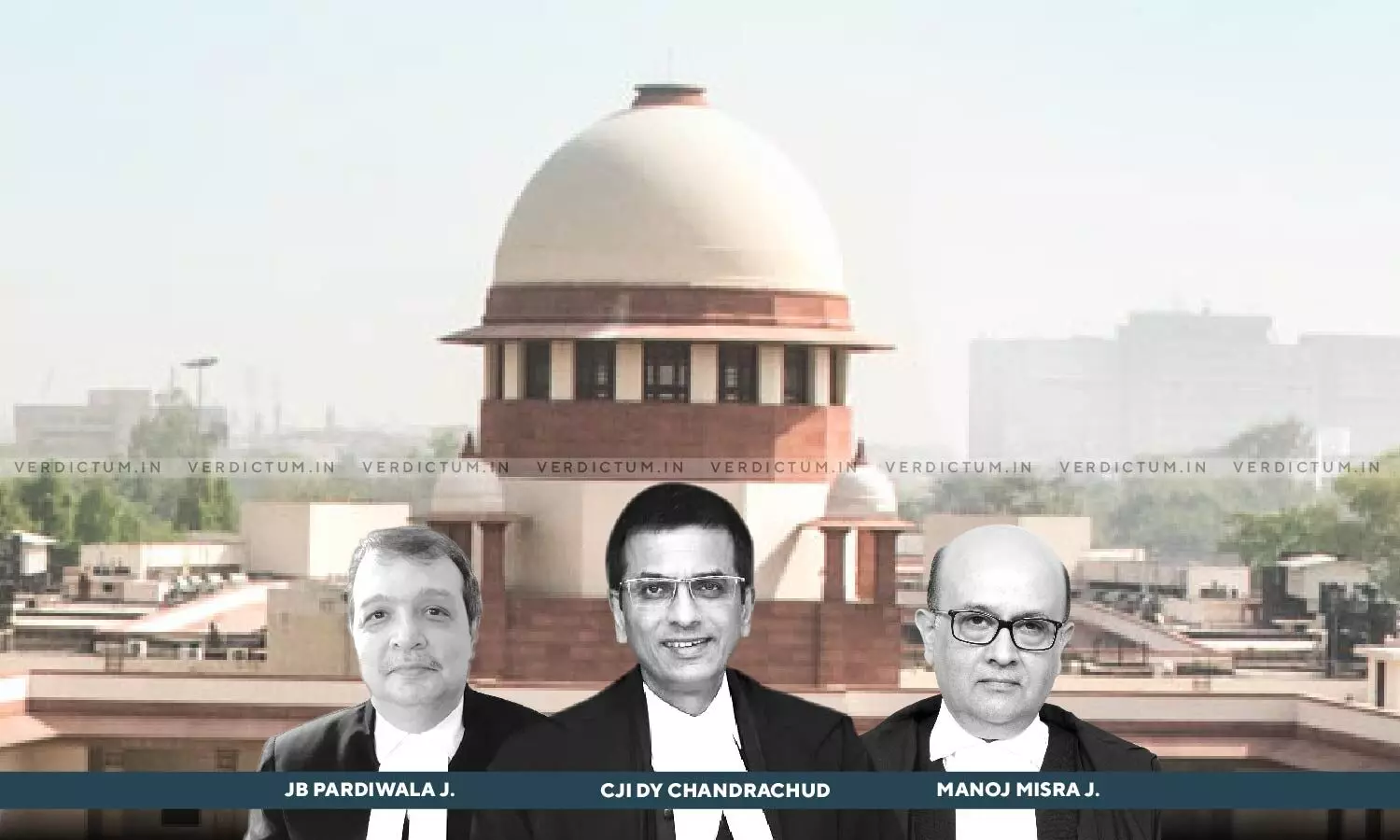
Constitutional Validity Of A Statute Cannot Be Challenged For Violation Of Basic Structure Of Constitution: Supreme Court
 |
|The Supreme Court has reiterated that the constitutional validity of a statute cannot be challenged for the violation of the basic structure of the Constitution.
The Bench of Chief Justice DY Chandrachud, Justice JB Pardiwala, and Justice Manoj Misra held that a statute can only be struck down only for the violation of Part III or any other provision of the Constitution or for being without legislative competence.
"The reason is that concepts such as democracy, federalism, and secularism are undefined concepts. Allowing courts to strike down legislation for violation of such concepts will introduce an element of uncertainty in our constitutional adjudication," the Court said.
The Bench further stated, "Recently, this Court has accepted that a challenge to the constitutional validity of a statute for violation of the basic structure is a technical aspect because the infraction has to be traced to the express provisions of the Constitution. Hence, in a challenge to the validity of a statute for violation of the principle of secularism, it must be shown that the statute violates provisions of the Constitution pertaining to secularism."
The Court examined the extent to which the basic structure doctrine can be applied to test the constitutional validity of ordinary statutes. The Court reviewed a series of landmark judgments, reflecting a nuanced judicial divide on whether statutes, as opposed to constitutional amendments, can be challenged for violating the Constitution’s basic structure.
The basic structure doctrine, established in Kesavananda Bharati v. State of Kerala (1973), held that certain foundational aspects of the Constitution cannot be amended even by Parliament. However, in Indira Nehru Gandhi v. Raj Narain (1975), a majority of the Bench ruled that the doctrine does not apply to ordinary legislation, as statutes are subordinate to constitutional amendments and remain within the bounds of legislative competence. However, in a notable dissent, Justice M. H. Beg argued that the basic structure could indeed be applied to statutes if they exceeded the scope of legislative power.
This position was further reinforced in State of Karnataka v. Union of India (1977), where a Bench led by Justice N. L. Untwalia, with concurring opinions from Justices P. N. Shingal and Jaswant Singh, maintained that statutes could not be invalidated under the basic structure doctrine if they remain consistent with constitutional provisions. Justice Y. V. Chandrachud echoed this, asserting that as long as a statute is within legislative competence and does not infringe Part III of the Constitution, it should remain immune from such challenges. Yet Chief Justice Beg continued his dissent, arguing for the applicability of the doctrine to assess legislation that may conflict with the Constitution’s core principles.
Subsequent rulings, including Kuldip Nayar v. Union of India (2006), upheld this stance, but in Madras Bar Association v. Union of India (2014), Justice J. S. Khehar applied the basic structure doctrine to scrutinize the validity of a law that sought to transfer judicial power from High Courts to tribunals. He contended that if newly created tribunals fail to uphold the standards and characteristics of the courts they replace, it would breach the Constitution’s basic structure.
The Court also revisited the doctrine in Supreme Court Advocates-on-Record Association v. Union of India (2015) concerning the National Judicial Appointments Commission Act. Justice Khehar argued that violations of the basic structure, while a technical flaw, may not amount to a legal infirmity. Contrastingly, Justice Lokur supported the majority view that the doctrine should not apply to statutes, upholding the principle from the State of Karnataka.
Cause Title: Anjum Kadari & Anr. v. Union of India & Ors. [Neutral Citation No. 2024 INSC 831]
Click here to read/download the Judgment